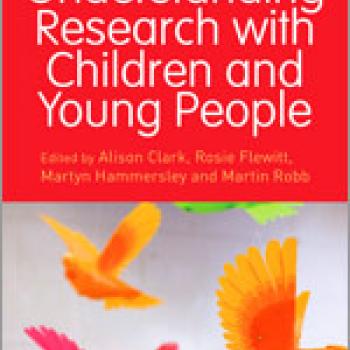Publication Information

The chapter explores methods used in the Young Lives survey, how decisions were made about its design, and how key stakeholders are involved in the survey development in order to ensure the findings will be useful for policy.
The school survey was introduced into Young Lives following the third round of the household survey, when the team realised we had a lot of data about the children's education outcomes, but little information about the schools they attended or the experiences of schooling. The school survey aims to gater data suited to policy-relevant analysis of the key determinants of education achievement and protression, addressing school-quality issues both in terms of the impact on the individual child and in terms of the functioning of the education systems.
The development of the school survey presents complex challenges for research design and analysis, not least because the nature and purpose of educaiton is rooted in history, culture and context, so that 'ready-made' solutions to problems of educational auality may have different impacts and different degrees of relevance and applicability across different settings. Understanding context and institutional and policy environments is central to the approach adopted by Young Lives, alongside the networks withn the study countries that have been crucial for the contextualisation of research questions and methodological approaches.
Reference:
Caine Rolleston ( 2014) ' Young Lives: Reflections on Quantitative Research in Education within a Longitudinal International Study', in A.Clark et al. (eds.) Understanding Research with Children and Young People (pp.222-232). London: Sage Publications.

The chapter explores methods used in the Young Lives survey, how decisions were made about its design, and how key stakeholders are involved in the survey development in order to ensure the findings will be useful for policy.
The school survey was introduced into Young Lives following the third round of the household survey, when the team realised we had a lot of data about the children's education outcomes, but little information about the schools they attended or the experiences of schooling. The school survey aims to gater data suited to policy-relevant analysis of the key determinants of education achievement and protression, addressing school-quality issues both in terms of the impact on the individual child and in terms of the functioning of the education systems.
The development of the school survey presents complex challenges for research design and analysis, not least because the nature and purpose of educaiton is rooted in history, culture and context, so that 'ready-made' solutions to problems of educational auality may have different impacts and different degrees of relevance and applicability across different settings. Understanding context and institutional and policy environments is central to the approach adopted by Young Lives, alongside the networks withn the study countries that have been crucial for the contextualisation of research questions and methodological approaches.
Reference:
Caine Rolleston ( 2014) ' Young Lives: Reflections on Quantitative Research in Education within a Longitudinal International Study', in A.Clark et al. (eds.) Understanding Research with Children and Young People (pp.222-232). London: Sage Publications.

